Upcoming
Lee Kun-hee Collection Modern and Contemporary Korean Art Special Exhibition Collection: The Great Journey
2022-11-11 – 2023-01-29- Discover more
- Domestic
- No. of Artworks
- 97
- Venue
- 3F
- Inquiries
- 051-744-2602(인터넷예약 및 현장발권 가능)
- Audio Guide
- Audio Guide2
- Audio Guide3
Collection: The Great Journey has brought together collections of diverse collectors that have built their own identity in the art scene along with the Lee Kun-hee collection.
Collecting artworks begins with one’ desires. The act of collecting reflecting one’s desire to own something, a desire for an object, and one’s taste is such a private act. However, the size and content of the collection accumulated and expanded over time are subject to the possibility of expanding the horizons from one’s fixed values to a public domain. This is because collectors even play a role as historians who sponsor artists’ creations, protect their works, and record the times through collection. In fact, for centuries, art collectors have had a considerable influence on the history of art. Collectors have claimed to be active sponsors of art. Collectors have defended the value of works and artists with their own tastes and perspectives, even if they have not historically been highly valuated or appreciated in the market. The purchase and sponsorship of collectors became the main driving force for artworks and artists to survive under financially stricken conditions. Artworks that have withered away physical vanishment represent the spirit of the times and shed a light on the present and future through the past. Collections imbue a genuine meaning when they have the value of sharing as a firmly tied knot connecting the gaps in a loosely written history.
The exhibition began by paying attention to the act of “Lee Kun-hee” as a collector, as it goes beyond the Lee Kun-hee Collection on. In 2021, after Samsung Group Chairman Lee Kun-hee passed away, the bereaved family donated about 23,000 pieces of national and private treasures, and artworks he had collected to major national and public art institutions. The Lee Kun-hee collection dubbed as a donation of the century caught the eyes and ears of the public on an unprecedented scale, and their interest, which began with the Lee Kun-hee collection expanded to the act of collecting artworks and artwork collections. In today’s world, art collectors encompass not only individual collectors but also national and private art museums, galleries, and cultural foundations which form a cultural ecosystem. Collection: The Great Journey is curated to reconsider the true value of collection, while gathering the footprints of collectors who have continued the great journey of cherishing and preserving art. The exhibition presents the modern and contemporary art collections of cultural entities in the art community, along with the Lee Kun-hee collection at the National Museum of Modern and Contemporary Art, Korea, Daegu Art Museum, Jeonnam Museum of Art, which have now become public collections. It even covers from the collection of Leeum Museum of Art where the Lee Kun-hee collection has turned into another form of public value, the collection of Korea University Museum as an institution to perform educational functions, the collection of Amore Pacific Museum of Art as a corporate art collection, Museum SAN’s collection as a private art museum, and Gana Foundation for Arts and Culture collection, an art dealer that led the Korean art market.
The collectors presented in the show have researched and collected the modern and contemporary art and artworks in their respective fields. They have guarded artworks of the artists that have fiercely executed the creative mindset throughout a tumultuous history and played major roles by filling the gap in modern art. It is hoped that the exhibition could offer a chance to take a meaningful look at their significant contribution through the act of collecting and sharing the artworks, as well as help you better understand the journey of the Korean art.
The Lee Kun-hee Collection
The bereaved family of Lee Kun-hee, the chairman of Samsung Group, donated many art collections to national and public institutions in accordance with the will of the deceased which had been revealed during his lifetime. The Lee Kun-hee collection, which is recorded as a historical event in the Korean cultural history, has considerable art historical and aesthetic significance.
The large-scale donation of the collection has led the National Museum of Modern and Contemporary Art to house a total of 1,488 artworks, as well as local and regional art museums, to inherit this valuable heritage.
National and public art museums are struggling to collect rare modern artworks or overseas masterpieces with value because of a lack of resources. Their limitations in collection are naturally linked to the limitations in the research function of art museums, and and the donation of the Lee Kun-hee collection has triggered significant growth of the quality of art museums’ collections.
Chairman Lee, who has been a powerful influence in the Korean art scene, once said, “Even if collecting and preserving cultural heritage costs a lot of money and time, it is for the sake of the future of human culture, and I think it is a duty of the times for all of us.” His collection, which led to a vast range of collections and large-scale donations, goes beyond serving as private collections and gives the audience a sense of the true value that can be found in collections.
Leeum Museum of Art
Leeum Museum of Art, originally housing the Lee Kun-hee Collection, is an art museum under Samsung Foundation of Culture, which opened in 2004. It is the largest private art museum in Korea and boasts a wide range of collections ranging from national treasures to famous paintings and other artworks by major modern and contemporary artists.
The history of the Lee Kun-hee Collection dates to the collection of ancient art by Lee Byung-chul, the former chairman of Samsung Group. Lee showed extraordinary enthusiasm for collecting artworks to the point where it was one of his favorite hobbies. As he pondered in his old age on how to maintain the vast antique art collection, he established Samsung Foundation of Culture and donated about 1,200 personal collections to the foundation. In 1982, the foundation opened Ho-Am Art Museum with the donated collection of Chairman Lee Byung-chul who wished to promote the value of traditional Korean art. Following his father’s passion for collecting, Chairman Lee Kun-hee passionately collected cultural heritages and artworks based on his own collection philosophy. His interest in the 20th century art and his focused collection of masterpieces by major artists were under his policy of collecting works of “highest mastery.” Leeum Museum of Art, which opened in 2004 based on his carefully selected collection, has established itself as a representative art institution in Korea.
Museum SAN
Museum SAN is a private art museum operated by the Hansol Cultural Foundation, which opened in Wonju, Gangwon Province in 2014. Lee Inhee, founder and adviser of Hansol Group, who had a special affection for art, founded the Hansol Cultural Foundation in 1995 by contributing his own assets to fulfill his will to sponsor culture arts, and donated a collection of artworks he has owned for more than 40 years. Museum SAN is a comprehensive art museum that combines the Paper Museum (currently, “Paper Gallery”) operated by the foundation since 1997 and an art museum, which is also called a “lifetime work” by Lee Inhee. Hansol Museum opened in 2013 after intensive efforts to construct it beginning in 2005, and it has been up and running since its name was changed into “Museum SAN” in 2014.
Lee Inhee, the eldest daughter of the late chairman Lee Byung-chul of Samsung Group, was influenced by his father and came to be involved in collecting artworks. Looking at his father’s collection of antique art, she naturally developed an affection for culture and arts, and she is said to have been interested in modern art whose period falls right after the era of masterpieces her father had collected. Having built up her artistic caliber and maintained visionary taste for art since young, she has been considered as “No. 1 female art collector in Korea” at a time when there was no concept of a female collector, leaving a unique milestone in the Korean cultural history.
The collection of Museum SAN covers a wide range of works from large-scale stereoscopic works by world-class artists to modern and contemporary Korean art collections. In particular, the modern and contemporary art collection carefully built up through advisor Lee’s artistic insight and caliber consists of works of major artists representing Korean art in the 20th century. It is a collection deserving art historical research in depth as it covers not only major artists’ masterpieces, but also rare works such as props from the early days when artists’ reputation was not established.
Amorepacific Museum of Art
Amorepacific Museum of Art started based on an antique collection owned by Seo Sung-whan, the former chairman and CEO of Amorepacific Corporation. Former chairman Seo collected works ranging from artifacts on women and makeup to tea utensils and ceramics and ancient calligraphic paintings and opened Pacific Museum in 1979.
Pacific Museum was officially renamed Amorepacific Museum of Art (APMA) in 2009. With the opening of the Amorepacific Group’s new building in Yongsan in 2018, the museum has also set up a new base in the headquarters building. Since then, it has been passionately unfolded its programs as a major private art museum in Korea by presenting exhibitions and research projects of various trends.
Based on research and interest in the aesthetics of traditionality, Amorepacific Museum of Art gradually expanded its scope by collecting major works by domestic and foreign artists, from ancient art to modern and contemporary art. Since then, it has led to the collection of contemporary art and works by foreign artists, and has developed into an art museum that encompasses ancient and contemporary art from the East and the West and has a wide scope of collection organically aligned together. Amorepacific Museum of Art houses a number of major works by Korean artists as if to correspond to the corporate spirit that has focused on Korean beauty. Some works in the Korean painting collection of Amorepacific Museum of Art introduced in this exhibition are to shed a light on the aesthetics of traditional paintings that form the backbone of Korean modern art.
Korea University Museum
Korea University Museum began in 1934 with the opening of the Folklore Exhibition Hall as a library archive room. It is a comprehensive museum with a diverse collection of about 100,000 pieces of art from folk to ancient to modern and contemporary art. What attracts attention in the collection of Korea University Museum is the works of major artists in modern and contemporary art history. Since the 1950s, the museum has come to house a high-quality collection of ancient and modern paintings by representative artists in the first half of the 20th century thanks to donations and collection of their bereaved families for many years. Against this backdrop, the museum has implemented a groundbreaking modern and contemporary art collection policy as a museum in the 1960s, finding it necessary to collect modern and contemporary art whose era comes after the ancient art so that it could conduct a systematic research of art history.
Generous support of former President Kim Sang-hyeop, who was very much fond of modern art, enabled the full-fledged collection of artworks. High-quality collection of modern and contemporary art was made possible thanks to the passion of Yun Se-young, Head of Department of Curatorial Team in collecting works of the Korean painting under the leadership of former director of the museum Kang Jin-chul, and curator Lee Kyu-ho in collecting works of Western painting. In 1972-73, Western painter Lee Kyu-ho was serving as a museum curator, which has led the museum to collect many major works due to Lee’s connections and insights. The collection of Korea University Museum ranging from works of academicism from National Art Exhibition which served as a gateway for artists in the domestic art scene to abstract and Informel artworks is an important cultural heritage of Korean art history.
Gana Foundation for Arts and Culture
In 1983, Chairman Lee Ho-jae founded Gana Art Gallery, the predecessor of Gana Art. Since then, Gana Art has achieved remarkable growth for about 40 years, having grown into an iconic gallery in the Korean art scene.
Chairman Lee, as an art dealer and founder of Gana Art, promoted the value of collecting artworks―an essential element for a virtuous cycle of the art ecosystem. Having been in the art community for a long time and contemplating over the meaning of collection of artworks, he discovered the true value of collection in donation. He declared, “The act of collecting by collectors is for the sake of social contribution beyond personal preferences.” He donated artworks to the Seoul Museum of Art, Seoul Arts Center, Seoul Calligraphy Art Museum and Lee Jung Seob Art Museum, and practiced the act of contribution to the society.
Founded in 2014, Gana Foundation for Arts and Culture is the first-of-its-kind as a foundation established by a domestic gallery. Chairman Lee disclosed his collection of modern and contemporary art that he collected for more than 30 years to the public through Gana Foundation for Arts and Culture and expressed his willingness to publicize the art capital that Gana Art has accumulated.
The collection of Gana Foundation for Arts and Culture consists of wide-ranging eras and artists. It includes representative works of famous artists recognized in the art scene, and even works of artists whose artistic career was short-lived, local artists and artists that lived short lives whose works have not received the attention of the art market but are major assets in Korean art history.
Collecting artworks begins with one’ desires. The act of collecting reflecting one’s desire to own something, a desire for an object, and one’s taste is such a private act. However, the size and content of the collection accumulated and expanded over time are subject to the possibility of expanding the horizons from one’s fixed values to a public domain. This is because collectors even play a role as historians who sponsor artists’ creations, protect their works, and record the times through collection. In fact, for centuries, art collectors have had a considerable influence on the history of art. Collectors have claimed to be active sponsors of art. Collectors have defended the value of works and artists with their own tastes and perspectives, even if they have not historically been highly valuated or appreciated in the market. The purchase and sponsorship of collectors became the main driving force for artworks and artists to survive under financially stricken conditions. Artworks that have withered away physical vanishment represent the spirit of the times and shed a light on the present and future through the past. Collections imbue a genuine meaning when they have the value of sharing as a firmly tied knot connecting the gaps in a loosely written history.
The exhibition began by paying attention to the act of “Lee Kun-hee” as a collector, as it goes beyond the Lee Kun-hee Collection on. In 2021, after Samsung Group Chairman Lee Kun-hee passed away, the bereaved family donated about 23,000 pieces of national and private treasures, and artworks he had collected to major national and public art institutions. The Lee Kun-hee collection dubbed as a donation of the century caught the eyes and ears of the public on an unprecedented scale, and their interest, which began with the Lee Kun-hee collection expanded to the act of collecting artworks and artwork collections. In today’s world, art collectors encompass not only individual collectors but also national and private art museums, galleries, and cultural foundations which form a cultural ecosystem. Collection: The Great Journey is curated to reconsider the true value of collection, while gathering the footprints of collectors who have continued the great journey of cherishing and preserving art. The exhibition presents the modern and contemporary art collections of cultural entities in the art community, along with the Lee Kun-hee collection at the National Museum of Modern and Contemporary Art, Korea, Daegu Art Museum, Jeonnam Museum of Art, which have now become public collections. It even covers from the collection of Leeum Museum of Art where the Lee Kun-hee collection has turned into another form of public value, the collection of Korea University Museum as an institution to perform educational functions, the collection of Amore Pacific Museum of Art as a corporate art collection, Museum SAN’s collection as a private art museum, and Gana Foundation for Arts and Culture collection, an art dealer that led the Korean art market.
The collectors presented in the show have researched and collected the modern and contemporary art and artworks in their respective fields. They have guarded artworks of the artists that have fiercely executed the creative mindset throughout a tumultuous history and played major roles by filling the gap in modern art. It is hoped that the exhibition could offer a chance to take a meaningful look at their significant contribution through the act of collecting and sharing the artworks, as well as help you better understand the journey of the Korean art.
The Lee Kun-hee Collection
The bereaved family of Lee Kun-hee, the chairman of Samsung Group, donated many art collections to national and public institutions in accordance with the will of the deceased which had been revealed during his lifetime. The Lee Kun-hee collection, which is recorded as a historical event in the Korean cultural history, has considerable art historical and aesthetic significance.
The large-scale donation of the collection has led the National Museum of Modern and Contemporary Art to house a total of 1,488 artworks, as well as local and regional art museums, to inherit this valuable heritage.
National and public art museums are struggling to collect rare modern artworks or overseas masterpieces with value because of a lack of resources. Their limitations in collection are naturally linked to the limitations in the research function of art museums, and and the donation of the Lee Kun-hee collection has triggered significant growth of the quality of art museums’ collections.
Chairman Lee, who has been a powerful influence in the Korean art scene, once said, “Even if collecting and preserving cultural heritage costs a lot of money and time, it is for the sake of the future of human culture, and I think it is a duty of the times for all of us.” His collection, which led to a vast range of collections and large-scale donations, goes beyond serving as private collections and gives the audience a sense of the true value that can be found in collections.
Leeum Museum of Art
Leeum Museum of Art, originally housing the Lee Kun-hee Collection, is an art museum under Samsung Foundation of Culture, which opened in 2004. It is the largest private art museum in Korea and boasts a wide range of collections ranging from national treasures to famous paintings and other artworks by major modern and contemporary artists.
The history of the Lee Kun-hee Collection dates to the collection of ancient art by Lee Byung-chul, the former chairman of Samsung Group. Lee showed extraordinary enthusiasm for collecting artworks to the point where it was one of his favorite hobbies. As he pondered in his old age on how to maintain the vast antique art collection, he established Samsung Foundation of Culture and donated about 1,200 personal collections to the foundation. In 1982, the foundation opened Ho-Am Art Museum with the donated collection of Chairman Lee Byung-chul who wished to promote the value of traditional Korean art. Following his father’s passion for collecting, Chairman Lee Kun-hee passionately collected cultural heritages and artworks based on his own collection philosophy. His interest in the 20th century art and his focused collection of masterpieces by major artists were under his policy of collecting works of “highest mastery.” Leeum Museum of Art, which opened in 2004 based on his carefully selected collection, has established itself as a representative art institution in Korea.
Museum SAN
Museum SAN is a private art museum operated by the Hansol Cultural Foundation, which opened in Wonju, Gangwon Province in 2014. Lee Inhee, founder and adviser of Hansol Group, who had a special affection for art, founded the Hansol Cultural Foundation in 1995 by contributing his own assets to fulfill his will to sponsor culture arts, and donated a collection of artworks he has owned for more than 40 years. Museum SAN is a comprehensive art museum that combines the Paper Museum (currently, “Paper Gallery”) operated by the foundation since 1997 and an art museum, which is also called a “lifetime work” by Lee Inhee. Hansol Museum opened in 2013 after intensive efforts to construct it beginning in 2005, and it has been up and running since its name was changed into “Museum SAN” in 2014.
Lee Inhee, the eldest daughter of the late chairman Lee Byung-chul of Samsung Group, was influenced by his father and came to be involved in collecting artworks. Looking at his father’s collection of antique art, she naturally developed an affection for culture and arts, and she is said to have been interested in modern art whose period falls right after the era of masterpieces her father had collected. Having built up her artistic caliber and maintained visionary taste for art since young, she has been considered as “No. 1 female art collector in Korea” at a time when there was no concept of a female collector, leaving a unique milestone in the Korean cultural history.
The collection of Museum SAN covers a wide range of works from large-scale stereoscopic works by world-class artists to modern and contemporary Korean art collections. In particular, the modern and contemporary art collection carefully built up through advisor Lee’s artistic insight and caliber consists of works of major artists representing Korean art in the 20th century. It is a collection deserving art historical research in depth as it covers not only major artists’ masterpieces, but also rare works such as props from the early days when artists’ reputation was not established.
Amorepacific Museum of Art
Amorepacific Museum of Art started based on an antique collection owned by Seo Sung-whan, the former chairman and CEO of Amorepacific Corporation. Former chairman Seo collected works ranging from artifacts on women and makeup to tea utensils and ceramics and ancient calligraphic paintings and opened Pacific Museum in 1979.
Pacific Museum was officially renamed Amorepacific Museum of Art (APMA) in 2009. With the opening of the Amorepacific Group’s new building in Yongsan in 2018, the museum has also set up a new base in the headquarters building. Since then, it has been passionately unfolded its programs as a major private art museum in Korea by presenting exhibitions and research projects of various trends.
Based on research and interest in the aesthetics of traditionality, Amorepacific Museum of Art gradually expanded its scope by collecting major works by domestic and foreign artists, from ancient art to modern and contemporary art. Since then, it has led to the collection of contemporary art and works by foreign artists, and has developed into an art museum that encompasses ancient and contemporary art from the East and the West and has a wide scope of collection organically aligned together. Amorepacific Museum of Art houses a number of major works by Korean artists as if to correspond to the corporate spirit that has focused on Korean beauty. Some works in the Korean painting collection of Amorepacific Museum of Art introduced in this exhibition are to shed a light on the aesthetics of traditional paintings that form the backbone of Korean modern art.
Korea University Museum
Korea University Museum began in 1934 with the opening of the Folklore Exhibition Hall as a library archive room. It is a comprehensive museum with a diverse collection of about 100,000 pieces of art from folk to ancient to modern and contemporary art. What attracts attention in the collection of Korea University Museum is the works of major artists in modern and contemporary art history. Since the 1950s, the museum has come to house a high-quality collection of ancient and modern paintings by representative artists in the first half of the 20th century thanks to donations and collection of their bereaved families for many years. Against this backdrop, the museum has implemented a groundbreaking modern and contemporary art collection policy as a museum in the 1960s, finding it necessary to collect modern and contemporary art whose era comes after the ancient art so that it could conduct a systematic research of art history.
Generous support of former President Kim Sang-hyeop, who was very much fond of modern art, enabled the full-fledged collection of artworks. High-quality collection of modern and contemporary art was made possible thanks to the passion of Yun Se-young, Head of Department of Curatorial Team in collecting works of the Korean painting under the leadership of former director of the museum Kang Jin-chul, and curator Lee Kyu-ho in collecting works of Western painting. In 1972-73, Western painter Lee Kyu-ho was serving as a museum curator, which has led the museum to collect many major works due to Lee’s connections and insights. The collection of Korea University Museum ranging from works of academicism from National Art Exhibition which served as a gateway for artists in the domestic art scene to abstract and Informel artworks is an important cultural heritage of Korean art history.
Gana Foundation for Arts and Culture
In 1983, Chairman Lee Ho-jae founded Gana Art Gallery, the predecessor of Gana Art. Since then, Gana Art has achieved remarkable growth for about 40 years, having grown into an iconic gallery in the Korean art scene.
Chairman Lee, as an art dealer and founder of Gana Art, promoted the value of collecting artworks―an essential element for a virtuous cycle of the art ecosystem. Having been in the art community for a long time and contemplating over the meaning of collection of artworks, he discovered the true value of collection in donation. He declared, “The act of collecting by collectors is for the sake of social contribution beyond personal preferences.” He donated artworks to the Seoul Museum of Art, Seoul Arts Center, Seoul Calligraphy Art Museum and Lee Jung Seob Art Museum, and practiced the act of contribution to the society.
Founded in 2014, Gana Foundation for Arts and Culture is the first-of-its-kind as a foundation established by a domestic gallery. Chairman Lee disclosed his collection of modern and contemporary art that he collected for more than 30 years to the public through Gana Foundation for Arts and Culture and expressed his willingness to publicize the art capital that Gana Art has accumulated.
The collection of Gana Foundation for Arts and Culture consists of wide-ranging eras and artists. It includes representative works of famous artists recognized in the art scene, and even works of artists whose artistic career was short-lived, local artists and artists that lived short lives whose works have not received the attention of the art market but are major assets in Korean art history.
Artist Introduction
Major Artworks
-
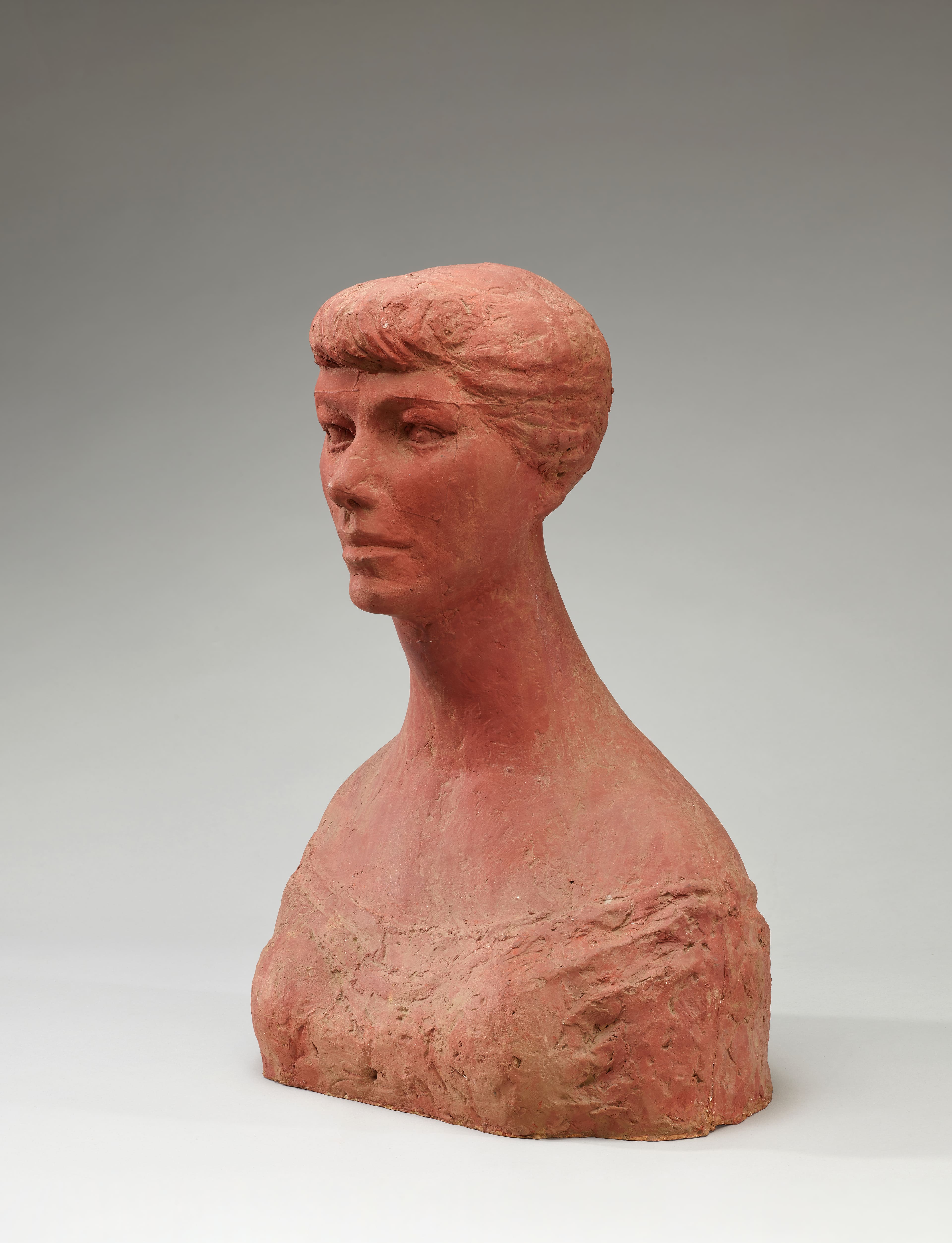 권진규 KWON Jinkyu 이순아 Lee Soonah 1968, 국립현대미술관 이건희컬렉션
권진규 KWON Jinkyu 이순아 Lee Soonah 1968, 국립현대미술관 이건희컬렉션 -
 박수근 PARK Sookeun 절구질하는 여인 Woman Pounding Grain 1957, 국립현대미술관 이건희컬렉션, ⓒ박수근연구소
박수근 PARK Sookeun 절구질하는 여인 Woman Pounding Grain 1957, 국립현대미술관 이건희컬렉션, ⓒ박수근연구소 -
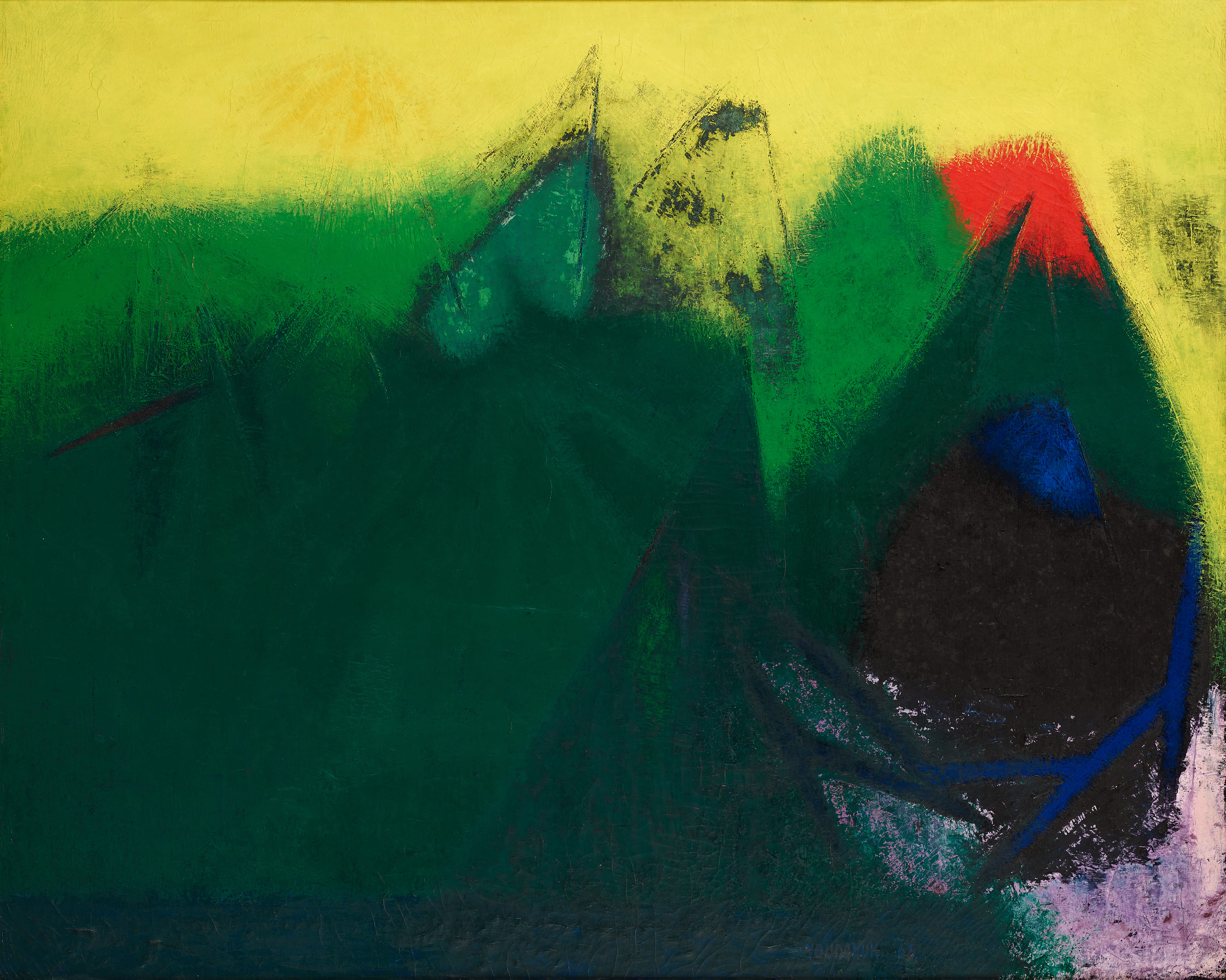 유영국 YOO Youngkuk 정상 Peak 1966, 국립현대미술관 이건희컬렉션
유영국 YOO Youngkuk 정상 Peak 1966, 국립현대미술관 이건희컬렉션 -
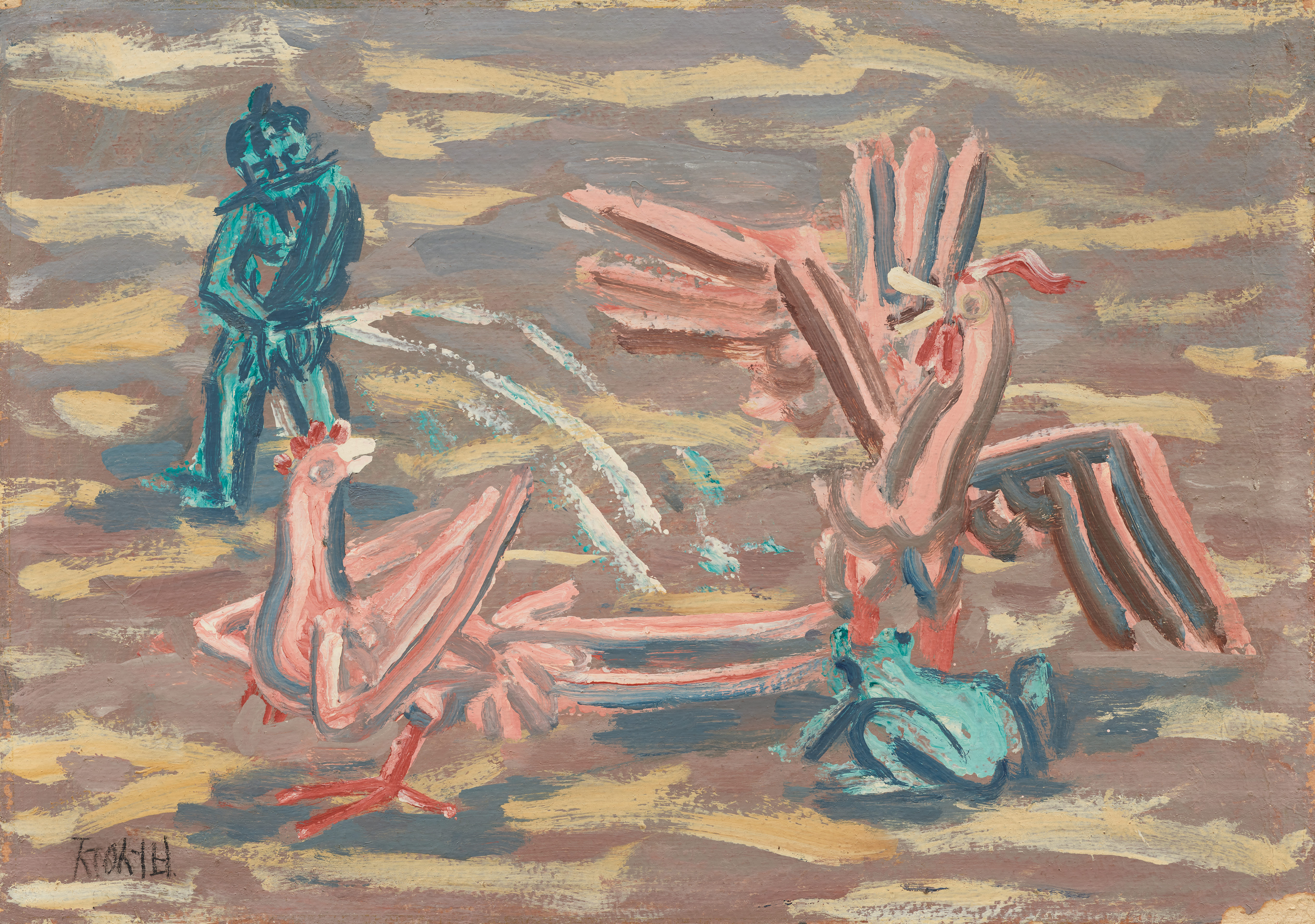 이중섭 LEE Jungseop 오줌싸개와 닭과 개구리 Urinating Man, Chicken and Frog 1950년대 초반(early 1950s), 국립현대미술관 이건희컬렉션
이중섭 LEE Jungseop 오줌싸개와 닭과 개구리 Urinating Man, Chicken and Frog 1950년대 초반(early 1950s), 국립현대미술관 이건희컬렉션 -
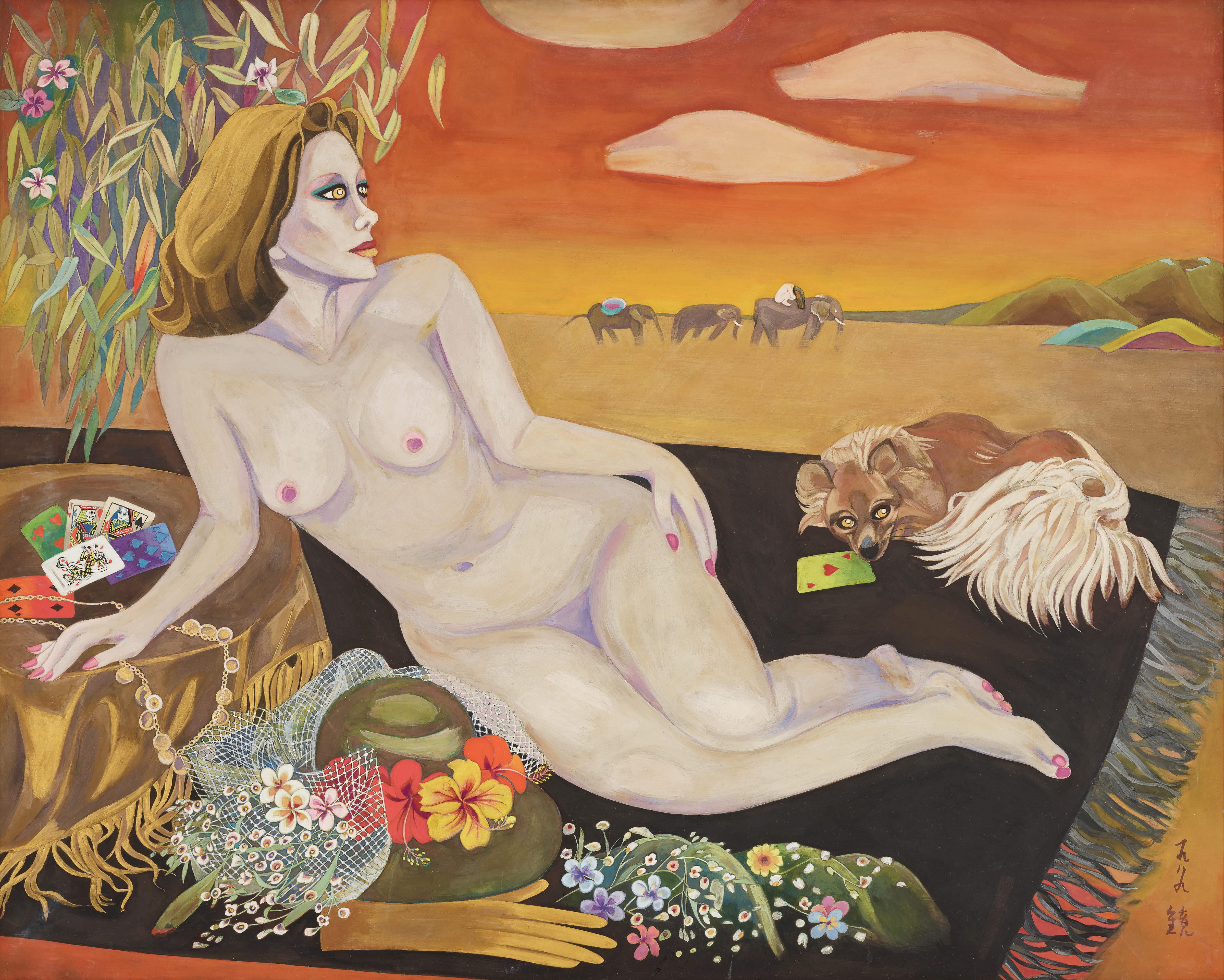 천경자 CHUN Kyungja 누가 울어2 Who’s Crying 2 1989, 국립현대미술관 이건희컬렉션
천경자 CHUN Kyungja 누가 울어2 Who’s Crying 2 1989, 국립현대미술관 이건희컬렉션 -
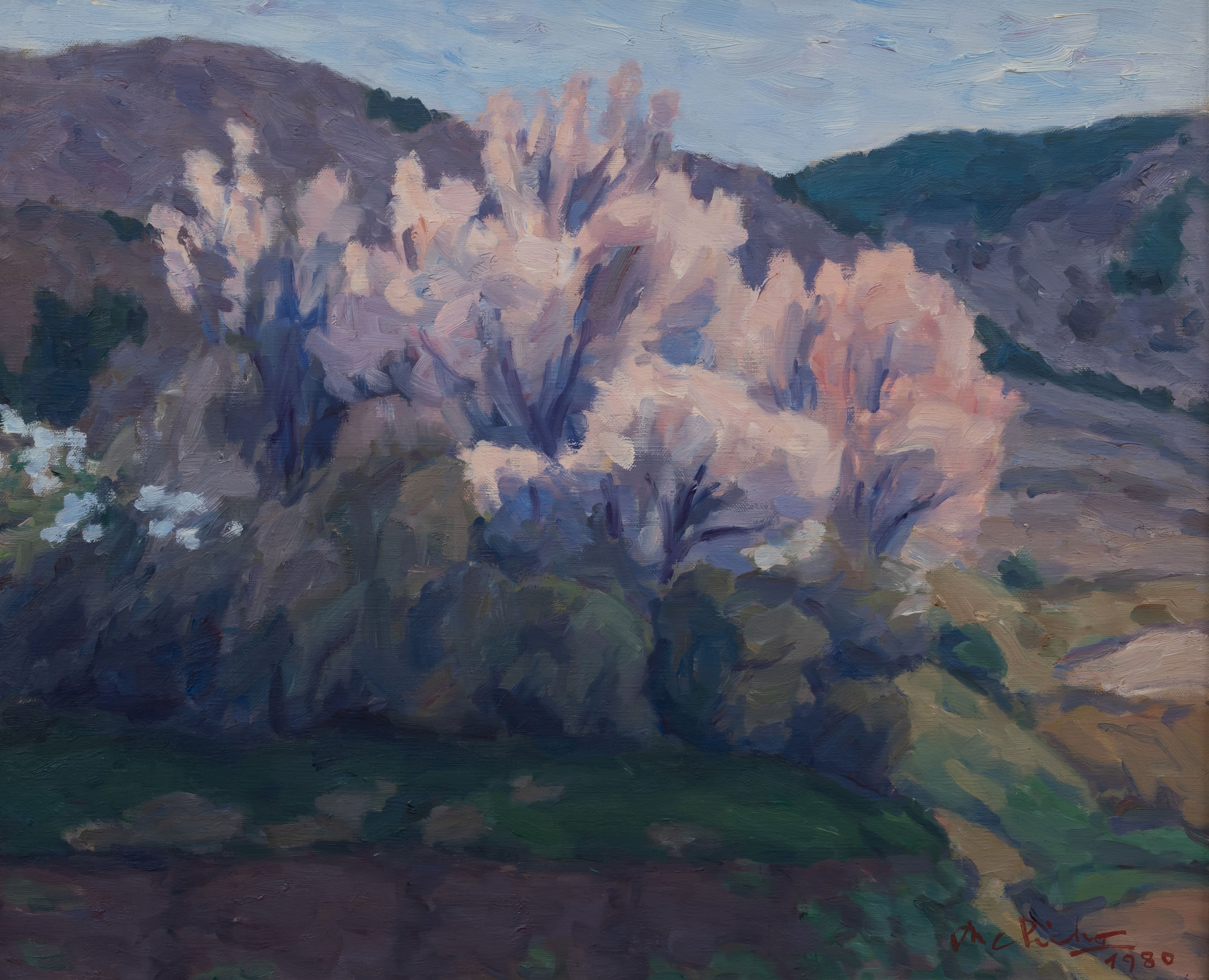 오지호 OH Jiho 복사꽃이 있는 풍경 Scenery with Peach Blossom Flowers 1980, 전남도립미술관 이건희컬렉션
오지호 OH Jiho 복사꽃이 있는 풍경 Scenery with Peach Blossom Flowers 1980, 전남도립미술관 이건희컬렉션 -
.jpg) 서동진 SEO Dongjin 자화상 Self-portrait 1924, 대구미술관 이건희컬렉션
서동진 SEO Dongjin 자화상 Self-portrait 1924, 대구미술관 이건희컬렉션 -
 이인성 LEE Insung 가을 어느날 On an Autumn Day 1934, 리움미술관 소장
이인성 LEE Insung 가을 어느날 On an Autumn Day 1934, 리움미술관 소장 -
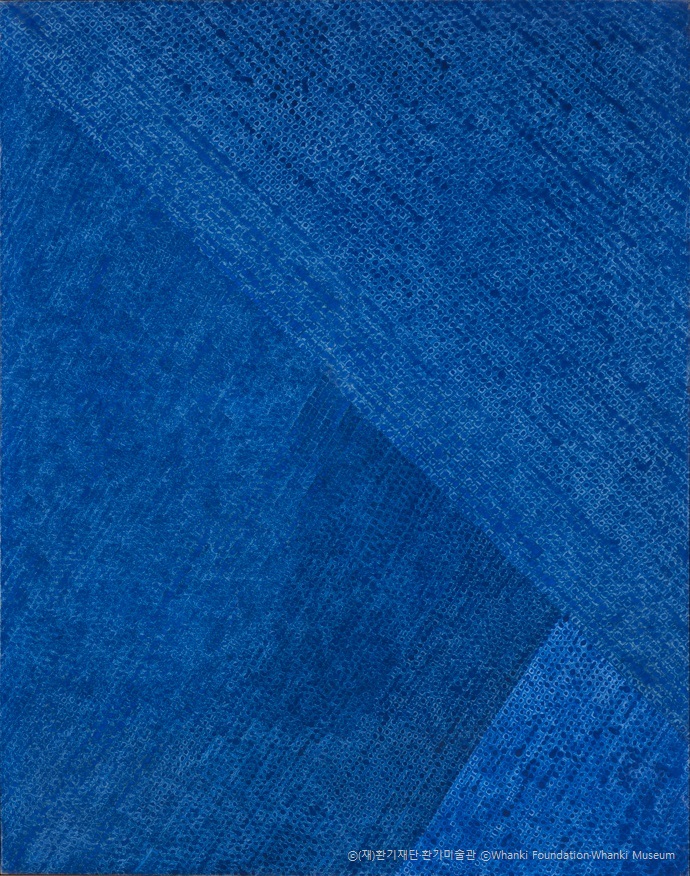 김환기 KIM Whanki 작품 19-VIII-72 #229 Work 19-VIII-72 #229 1972, 리움미술관 소장, ⓒ(재)환기재단·환기미술관
김환기 KIM Whanki 작품 19-VIII-72 #229 Work 19-VIII-72 #229 1972, 리움미술관 소장, ⓒ(재)환기재단·환기미술관 -
 이대원 LEE Daiwon 언덕의 파밭 A Field of Green Onion on a Hill 1938, 뮤지엄 산 소장
이대원 LEE Daiwon 언덕의 파밭 A Field of Green Onion on a Hill 1938, 뮤지엄 산 소장 -
 박고석 PARK Kosuk 풍경 The Landscape 1954, 뮤지엄 산 소장
박고석 PARK Kosuk 풍경 The Landscape 1954, 뮤지엄 산 소장 -
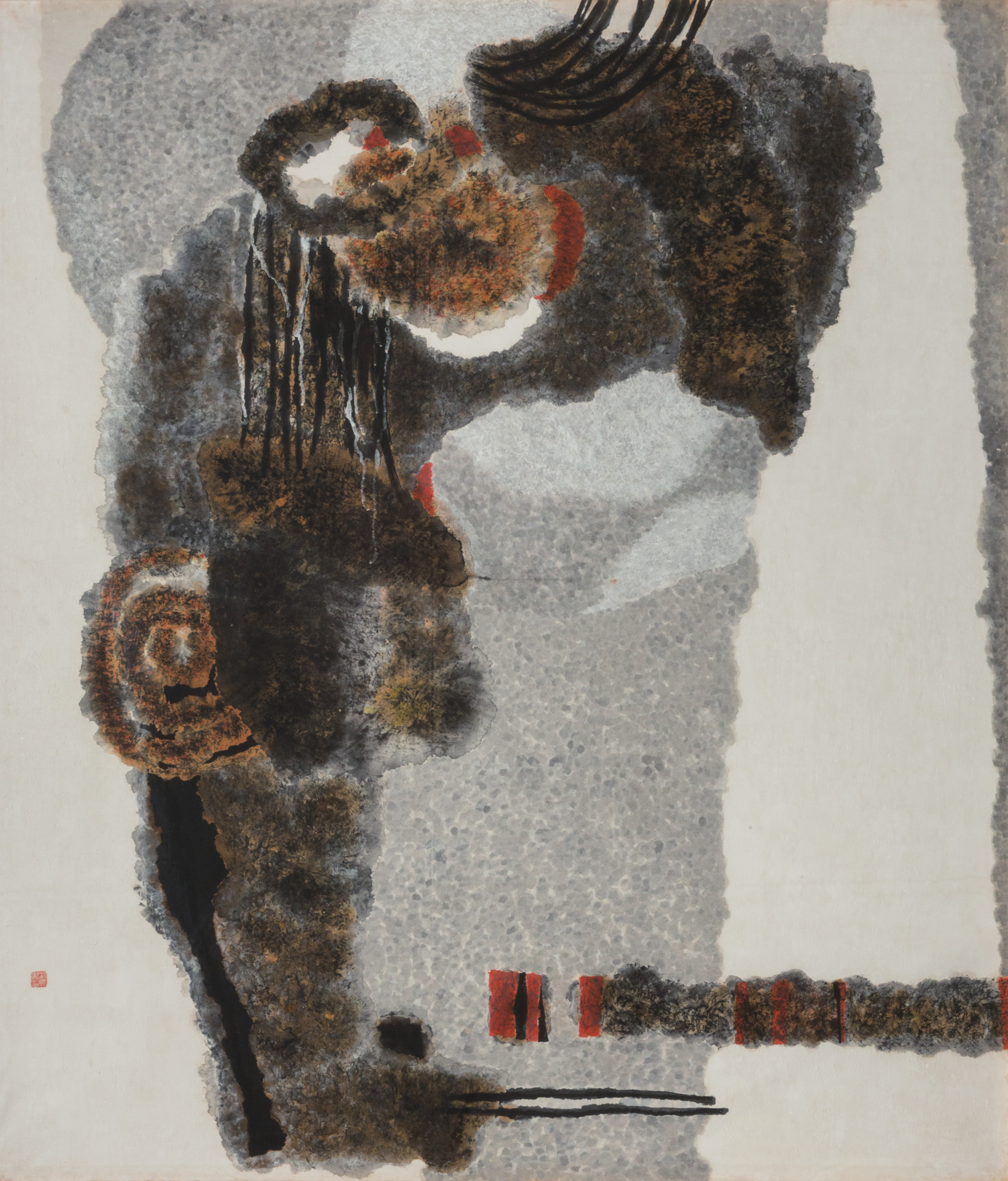 박래현 PARK Rehyun 작품 Ⅰ Work Ⅰ 1965, 가나문화재단 소장
박래현 PARK Rehyun 작품 Ⅰ Work Ⅰ 1965, 가나문화재단 소장 -
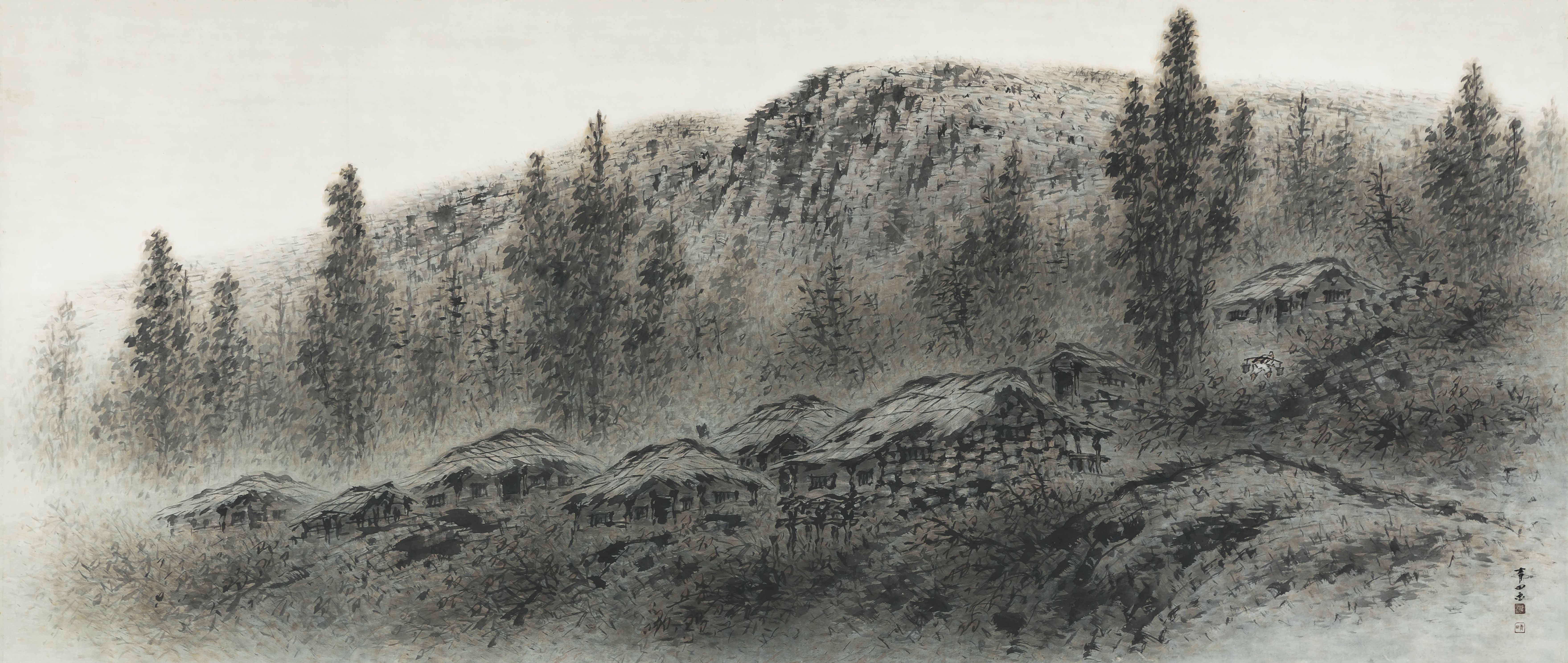 이상범 LEE Sangbeom 산음촌가 The Village at Mountain Shadows 1955, 가나문화재단 소장
이상범 LEE Sangbeom 산음촌가 The Village at Mountain Shadows 1955, 가나문화재단 소장 -
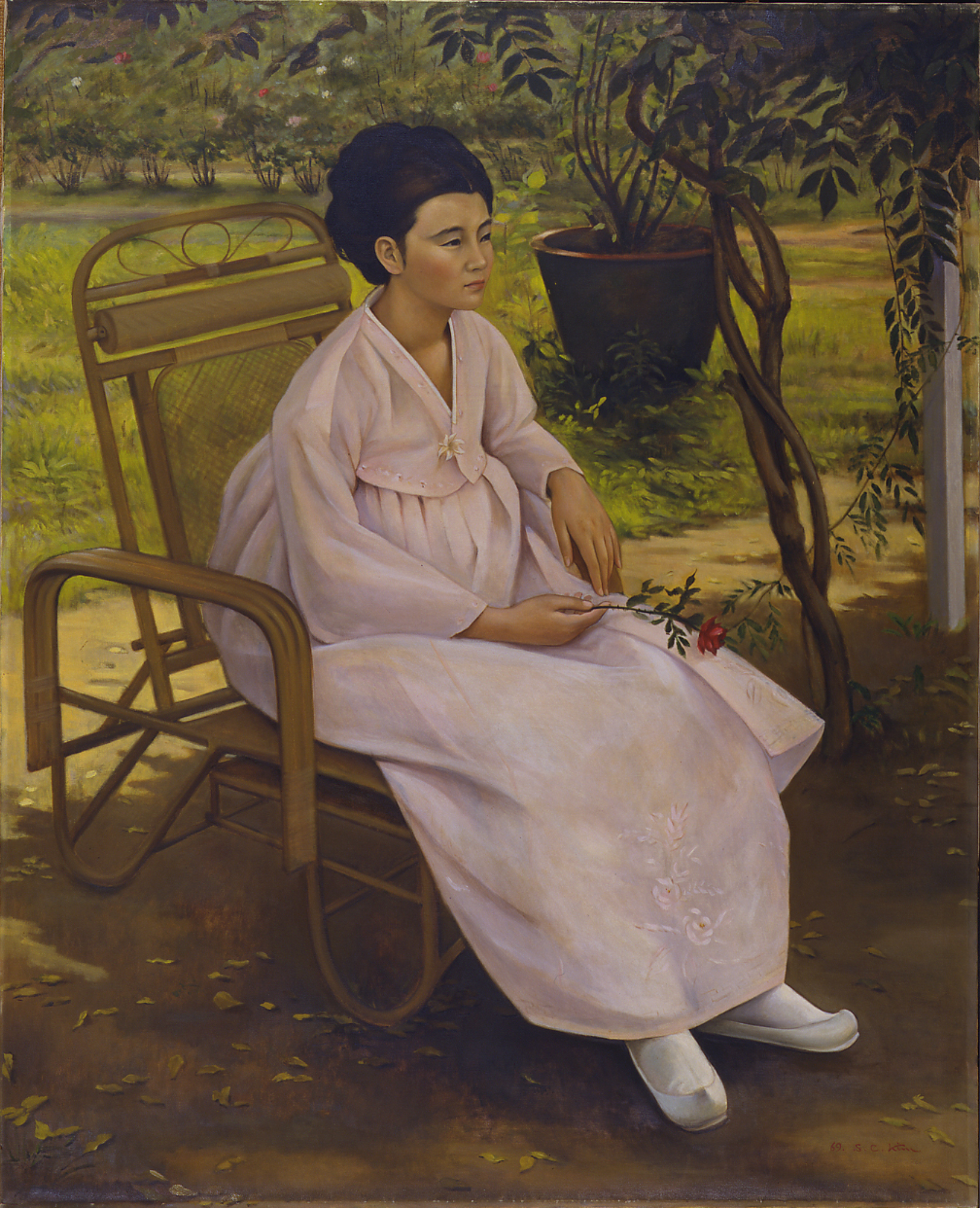 김숙진 KIM Souckchin 여인 Woman 1969, 고려대학교 박물관 소장
김숙진 KIM Souckchin 여인 Woman 1969, 고려대학교 박물관 소장 -
.jpg) 김형구 KIM Hyungkoo 새와 소녀 Bird and Girl 1961, 고려대학교 박물관 소장
김형구 KIM Hyungkoo 새와 소녀 Bird and Girl 1961, 고려대학교 박물관 소장 -
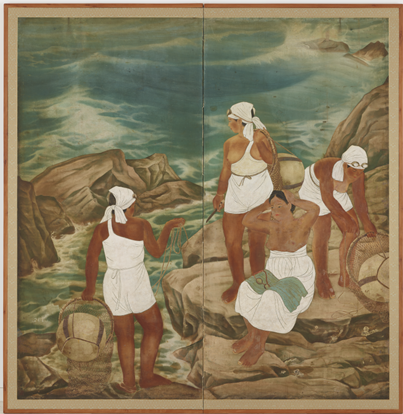 김기창 KIM Kichang 해녀 Sea Women(Women Divers) 1936, 아모레퍼시픽미술관 소장
김기창 KIM Kichang 해녀 Sea Women(Women Divers) 1936, 아모레퍼시픽미술관 소장 -
 변관식 BYEON Gwansik 일조향로폭 Morning Scene of the Waterfall in Hyangnobong 1950, 아모레퍼시픽미술관 소장
변관식 BYEON Gwansik 일조향로폭 Morning Scene of the Waterfall in Hyangnobong 1950, 아모레퍼시픽미술관 소장

